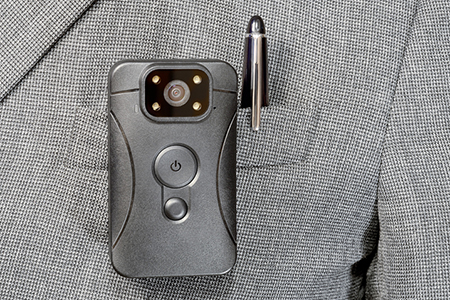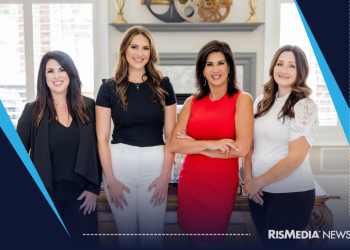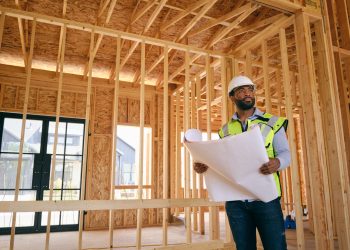According to the Bureau of Labor Statistics, there were 91 real estate-related deaths across the U.S. in 2016, 31 of which were the result of “violence and other injuries by persons or animals.” Although 61 percent of REALTORS® in an RISMedia survey feel “very safe” day-to-day, there are risks when hosting open houses and showing homes, and REALTORS® must remain vigilant.
“My first personal meetings with potential clients take place at my office,” says Sarah Gustafson, immediate past president of the REALTOR® Association of Central of Massachusetts and broker associate with Janice Mitchell Real Estate. “If I am going to their home, I let an agent know where I am and the name, phone and address of the person I am meeting.”
Gustafson doesn’t risk her own safety, or that of her agents. If a fellow agent doesn’t receive a text from her within 15 minutes of arriving to her client meet-up, she expects a phone call. If Gustafson doesn’t answer, that agent is directed to call the police.
Kevin Johnson, associate broker with CENTURY 21 OneBlue in Orlando, Fla., also follows similar protocols, and promotes thoroughly vetting a prospective client before meeting them outside the office.
“We encourage our agents to meet all new customers at our office, where we have a security system and camera in place and we can get a copy of their driver’s license,” says Johnson. “No one is going to a new location alone. We also don’t show houses without pre-qualification documents from a reputable bank or lender, adding in another layer of security.”
Vetting a candidate is not enough. Johnson also has a code name strategy in place should agents feel they are in a dangerous situation. This system ensures that agents remain safe without alerting the threat that they’ve called for help.
“To ensure all agents feel safe, especially when showing new properties, we have a ‘Folder Color’ system in place,” Johnson says. “If an agent is showing a property and feels uncomfortable, they can give an agent at the office a call and say, ‘The red folder for 123 Main Street is on my desk,” so that the agent is aware that assistance may be needed, all without tipping off the ‘customer.'”
Valerie Post, license partner at Engel & Völkers Boston, also does not take chances with her showing protocols.
“From day one of starting our firm 10 years ago, my business partner, Keith Shirley, and myself stressed safety on the job,” says Post. “We had become aware of a suburban agent that was killed at an open house in the basement when no one was around. We encourage and stress the buddy system of helping each other with open houses. In no other industry would you openly welcome a stranger into a home in the late afternoon with only one person manning the property. There is no excuse to ever let anyone put themselves in that position.”
As a precaution, Post asks that her agents follow a series of instructions:
- Have prospective buyers walk in front of you at showings. Don’t let them corner you in areas such as the attic, basement or walk-in closets without windows or a second door.
- Understand and know escape routes in all areas.
- Don’t get into vehicles unless you have vetted out the prospective buyers. Learn about who they are by using social media, Google, LinkedIn, etc., and let someone know who and what is on your calendar on a daily basis.
- Keep your phone charged and your gas tank filled.
- Wear comfortable shoes that give you good agility and the ability to run/walk quickly if necessary.
- Never meet a prospective buyer for the first time by yourself or in a vacant property.
- Give yourself time to get to know someone before you invite them into your car, if you are working on your own.
In an age when even sellers are taking precautions, some industry groups are looking into other methods to ensure safety. The Orlando Regional REALTOR® Association (ORRA), for example, partnered with Occly, a security solutions company, to offer a discounted rate of $129 for “Blinc” body cameras to its REALTOR® members. These devices work alongside the Occly Safety App to record video, images, audio and location, and provide a panic button that sends an alert to designated mobile devices and a siren that notifies those nearby.
“My focus is REALTOR® safety,” says Lou Nimkoff, president of ORRA. “I know all of us want to help people buy and sell homes, but none of us should be willing to put our lives on the line for it. If a potential buyer or seller isn’t willing to send you their ID, isn’t willing to meet with you at the office, or isn’t willing to take whatever initial steps you and your brokerage have determined is necessary to establish a relationship, then I would question whether you should be alone with them in an empty house.”
The real estate community also has access to myriad resources, especially through the National Association of REALTORS® (NAR). Members can access safety apps, products, webinars, articles, videos and more from NAR’s Safety page. Additionally, with NAR’s Safety Program Reimbursement Grant, each year, multiple state and local associations are able to further invest in safety.
Tools and systems aside, there’s one thing that’s in everyone’s arsenal, according to Post.
“Trusting your gut is your best defense,” Post says. “If you are uncomfortable at any time, get yourself out of there quickly. Awareness is an important part of safety training.”
 Liz Dominguez is RISMedia’s associate content editor. Email her your real estate news ideas at ldominguez@rismedia.com. For the latest real estate news and trends, bookmark RISMedia.com.
Liz Dominguez is RISMedia’s associate content editor. Email her your real estate news ideas at ldominguez@rismedia.com. For the latest real estate news and trends, bookmark RISMedia.com.










